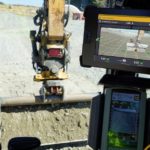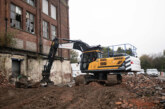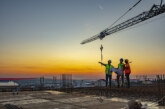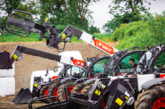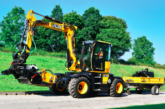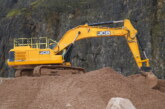In July 2020, Elon Musk announced his plans for Tesla to achieve “level five” autonomy by 2021. This gives the company little time to convert all car models to self-driving. While not all companies can promise to transform how we drive at such a rapid rate, autonomous vehicles are becoming more commonplace, both in consumer and industrial sectors, because of their many benefits. Here Ian Barnes, Head of Business at SITECH UK & Ireland, the leading distributor of Trimble® technology explores how the first step, with semi-autonomous guidance of excavators, can improve accuracy and productivity in construction.
Traditionally machine operators control excavators using joysticks located in the cab and are guided by physical indicators such as wooden profile boards and batter rails, which show them how much material they need to excavate. However, this approach can have several drawbacks for construction firms, including a lack of accuracy, incorrect grading and a build that does not match the design. Errors like these can lead to rework and increased operator fatigue. It can even lead to under or overloading, which means the machine is not performing as efficiently as it should or is being subjected to excessive wear and tear. As well as costing additional time and fuel, this can put your project behind schedule and push you over budget.
Trimble Earthworks can help companies overcome many of these issues while improving efficiency and productivity. Trimble Earthworks involves fitting the TD520 display to improve the efficiency of construction equipment. This system uses software that creates a virtual version of the site environment and provides real-time horizontal and vertical guidance for operators.
Efficiency
Trimble Earthworks provides visual and audio guidance that allows the operator to match their work with the design. When forming a slope, the operator will pull their bucket to match the required slope and, via the TD520 Control Box, visual and audio indicators will tell them whether it is cut to design. Meanwhile, the operator does not need to refer to external profiles or a banksman.
Taking things a step further, we can improve the process even more by adding a hydraulic valve module and, by engaging semi-automatic mode, the operator can pull back on the joystick to bring the stick in. At this point, the Trimble Earthworks system will take control of the boom and bucket, ensuring it is accurately following the design.
“Installing Trimble Earthworks technology means that contractors can use the GPS system to automatically match the grade with the design, ensuring that the correct level is taken in as few passes as possible,” explained Andrew McCann, Regional Sales Manager at Trimble. “As long as the design is correct, the system will build it right.”
Mapping
Advanced mapping is another feature of Trimble Earthworks, where a model of the existing site survey is overlayed with the required design. This shows the operator where they need to carry material from the existing cut to the required fill.
Operators can view their 3D models in a real-world environment at a true-life scale and in the context of existing surroundings. This allows users to see what the finished model will look like in the actual location. They can also work faster and safer using a blend of digital content and real-life surroundings to understand what they need to do to get the job done.
We have seen that there is a growing demand for automated technology and Highways England recently mandated 3D Machine Control to be used on all its work unless a specific business case proves otherwise. It has also created a roadmap for autonomous plant to be working on their construction sites by 2035. However, we will have to complete the first stage of remote-control plant where a machine can be working out on site and an operator controls it from a site office — or even their kitchen table at home. We have demonstrated remote control machine technology working today and all it will take is acceptance and adoption to make it real on site in the future.
While we may be waiting until next year for driverless cars, we’re already seeing advances in automated technology in the construction industry because of developments such as the Trimble Earthworks system.

